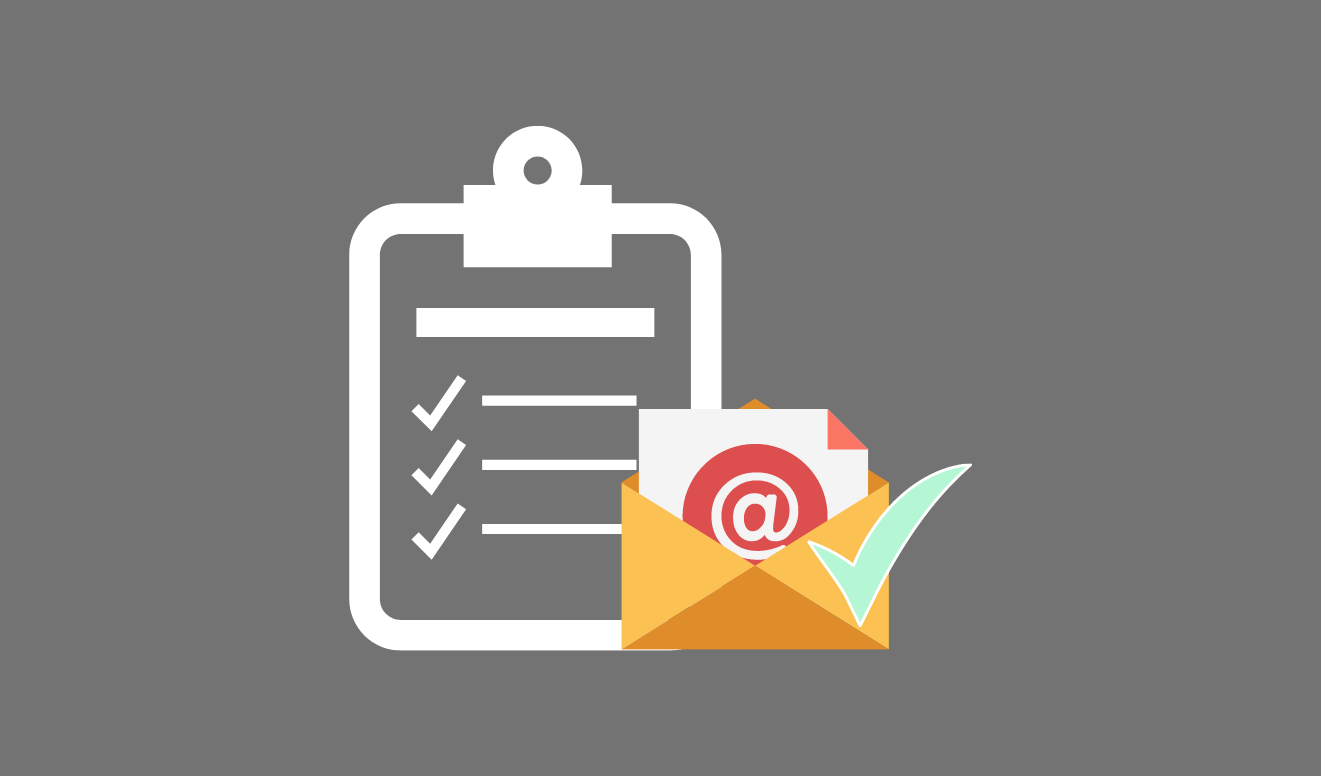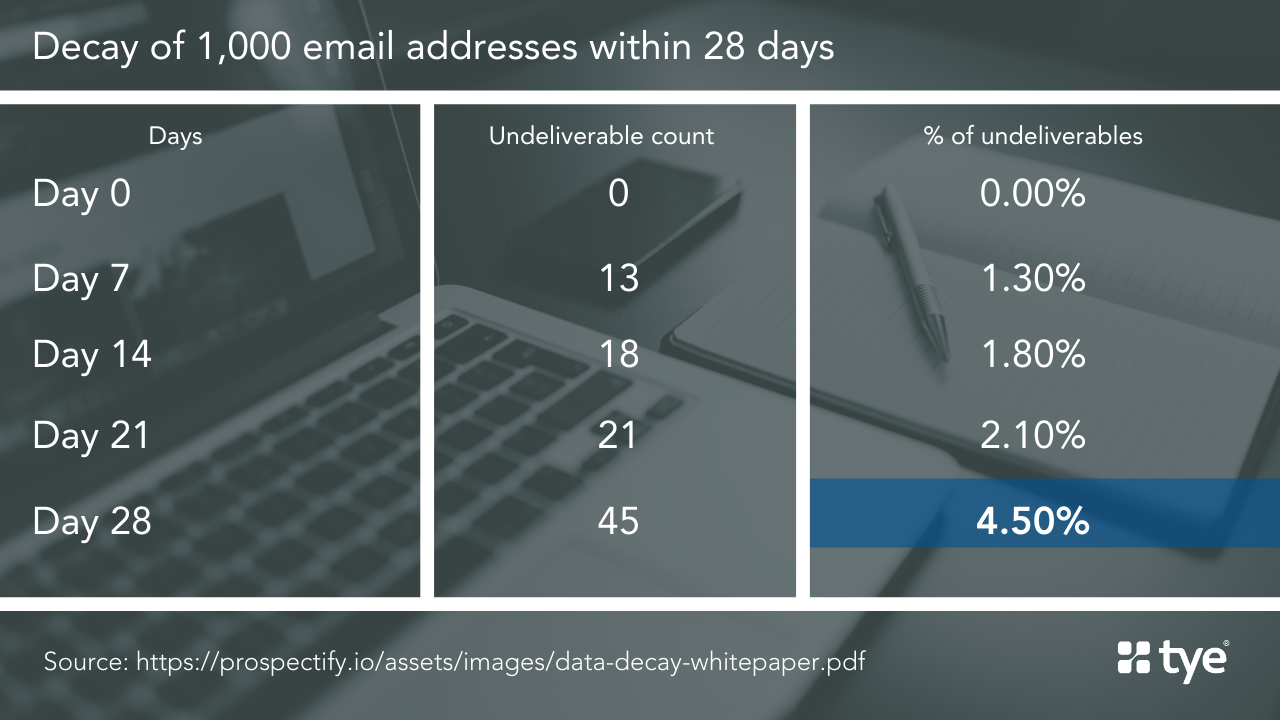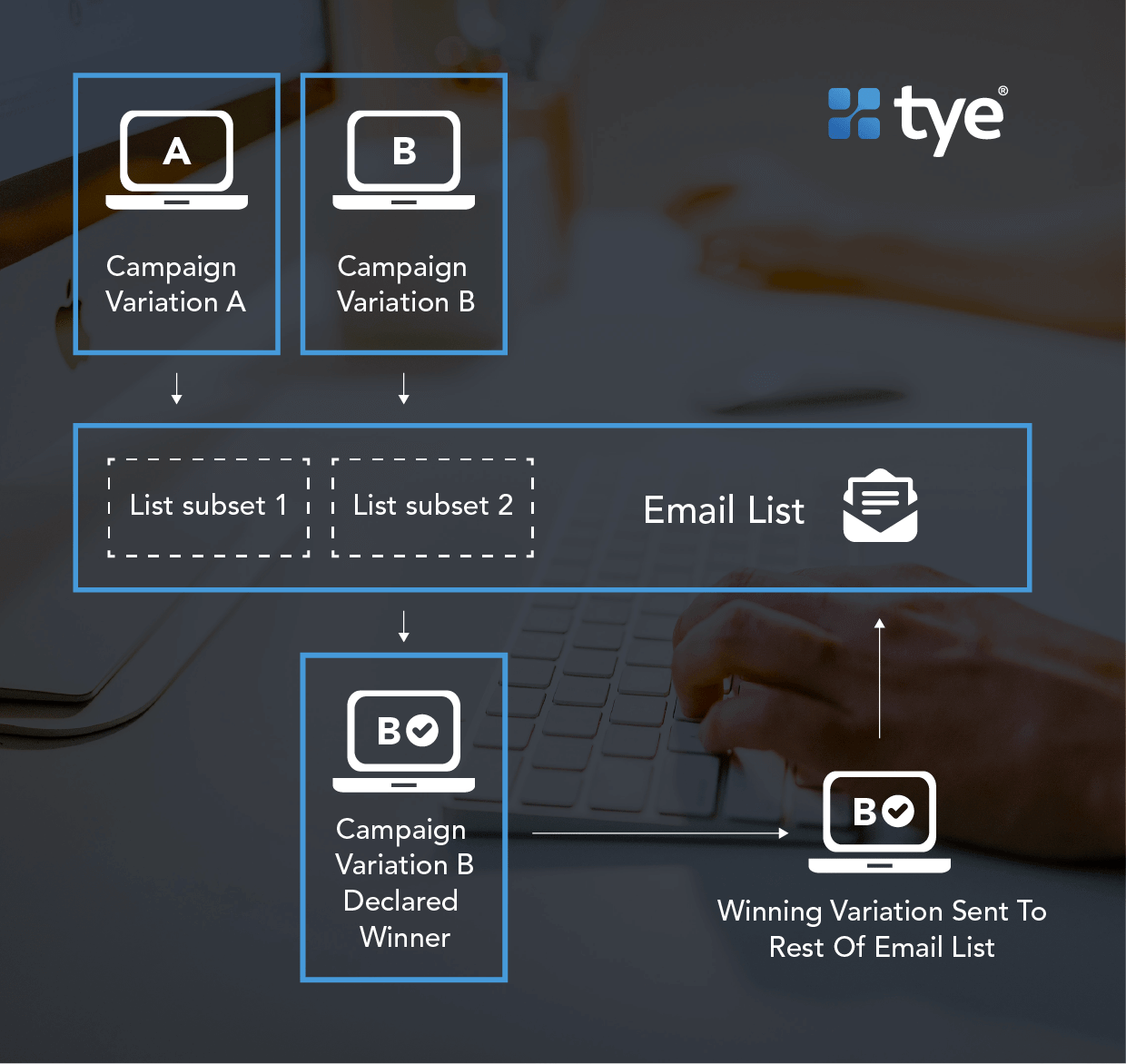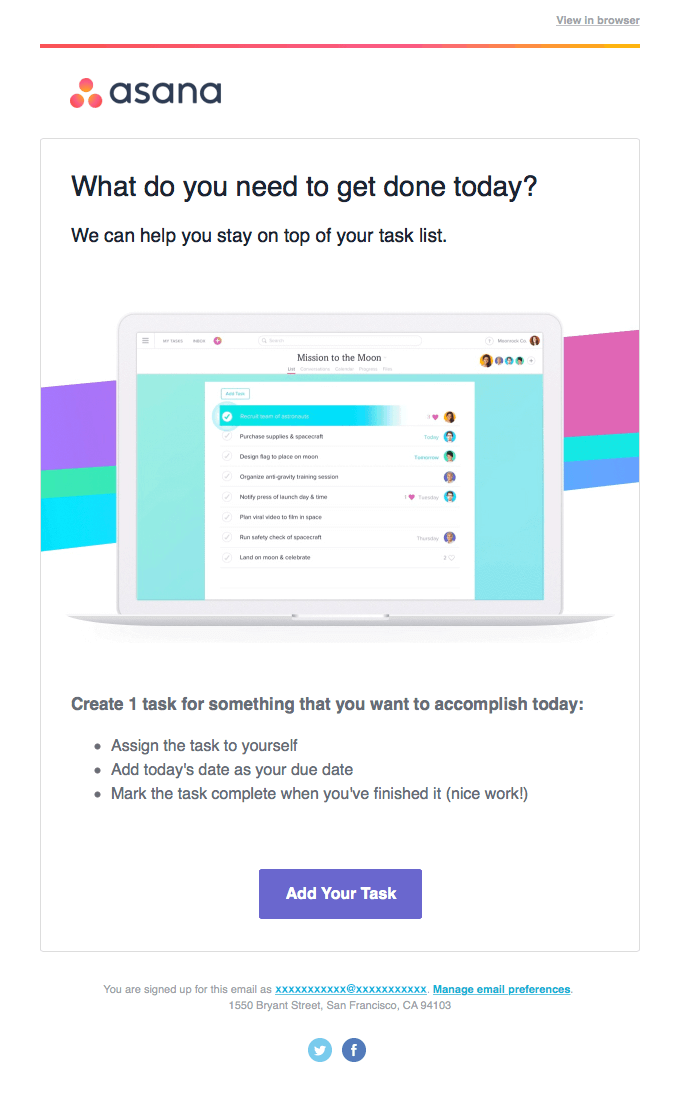10 Email List Management Best Practices And Tools (2021)
What is email list management?
Email list management is how you manage the contacts in your list: having a strategy for managing the tags, segments, and regularly cleaning and scrubbing the contacts in your list. It's an important part of email marketing and helps you send more targeted emails to your list.
Best practices for email list management
If you rely on email marketing to get your message across, then you need to follow some best practices for email list management. Good email list management means having systems for:
- Building your list with quality contacts
- Making sure your emails get to them
- Tracking leads through the funnel
- Keeping your list clean and your data accurate
- Keeping costs down and ROI high
It allows you to better connect with your customers and leads and ensure you’re making the most out of your email campaigns.
What makes a healthy email list?
A ‘healthy’ email list is one that contains good quality, engaged contacts that want to hear from you.
A list that is quickly losing subscribers, or that has poor open rates is going to negatively affect your sender reputation, and reduce your ability to make an impact with your email campaigns.
A healthy list has:
- Good deliverability rates (95% and higher according to Omnisend)
- Frequent new subscribers
- Good open rates (CampaignMonitor says 15-25% is the average)
- Low bounce rates (no higher than 3%, warns Omnisend)
- Contacts that have actively opted-in
How to organize an email list to keep it healthy
When it comes to organizing your email list, start by identifying when contact is no longer healthy. This means:
A contact that frequently soft bounces
A contact who has hard bounced
A contact who rarely, or never opens your emails
Contacts that did not opt-in (perhaps you were given or bought the email list)
Once you’ve identified your unhealthy contacts, segment them into groups, and remove them from your email send lists.
Email list management best practices
Below are 8 email list management best practices you can follow to maintain a healthy email list.
1. Best email list management: Maintain email list hygiene
As we’ve already explained, the first step when it comes to email list management is ensuring you are starting with a clean email list.
Cleaning your data allows you to start with a strong, healthy list so that you can focus your marketing efforts on the contacts that will result in revenue.
Data cleaning is not just a one-time activity. To maintain email list hygiene you need to repeat the exercise on a routine basis. The chart below shows how quickly data can decay and become undeliverable. It’s important to clean out those ‘bad’ contacts before they start to affect your deliverability.
Cleaning data can be a huge task. We’ve calculated that a single contact point takes an average of 3 minutes to clean, so it’s easy to see why companies don’t do it frequently enough.
Using a data cleaning tool can take a lot of the work out of your hands. Here’s a real-life example:
Vetrotech, started with over 80k contacts in their email list. Their data was in poor shape, which meant they struggled with segmentation and personalization. Their poor data was affecting their ability to send out great email campaigns. They outsourced the cleaning to tye and managed to improve 84% of the data for email marketing.
However, data cleaning tools aren’t for everyone. Depending on the size of your list, and your overall list hygiene, you may not need to outsource this.
2. Email list management system: Personalization
If you aren’t personalizing your emails past “Hi *first name*”, then you’re missing out on the opportunity to really connect with your contacts. Personalized email generates 6x higher transaction rates, so it’s a trick not to be missed.
The point of the personalized email is to make your contacts feel like you understand their pain points and can solve them. The personalized email content is relevant, timely, and feels ‘human’. All of the things we know are elements of a successful email marketing campaign.
Here’s an example of the email marketing used as part of their 2018 campaign:
If you don’t have a wealth of customer data, then personalization can still be effective on a smaller scale.
Here are ways you can personalize your emails with minimal customer data:
- Personalize the subject line with their name. It’ll help grab their attention.
- Use their name not just in the greeting, but throughout the email too. It’ll feel more like a direct message.
- For B2B marketing, mentioning the industry or company name can add relevancy to the content.
This can be done with ‘custom field tags’ or ‘personalization tags’ which are a feature of most email marketing tools, such as Mailchimp.
Your CRM (Customer Relationship Management) system is a gold mine of data you can already use, you just need to leverage it right. We put together a practical guide on customer segmentation in CRM will help you get started straight away.
Related: We look at how to clean up your current CRM database in this post and give useful tips on how you can keep it that way.
3. Segmentation
As well as using data to personalize emails with data field tags, you can use your data to segment your emails. Contact tags allow you to personalize on an individual level, while segmentation allows you to adjust the message of the campaign depending on the segment a recipient falls into.
Segmenting can be done in a number of ways and depends on the kind of data that is available to you. The idea is that you create sub-groups within your email list, categorized by characteristics you can pull out of your data. For example:
- Location
- Business size
- Lead score
- Activity on your website
Using marketing automation, you can then send multiple versions of an email with your email marketing campaign, each tailored to the segments you have created.
Contact tags
Contact tags allow you to provide an even more detailed layer to your segments.
Segments allow you to define key characteristics. This is what determines your overall marketing message.
Contact tags are used to create variation within those segments to add an extra layer of personalization. It’s usually around a specific one-time activity or campaign, such as ‘attended a webinar’ or ‘downloaded a whitepaper’.
Here’s an example:
You want to send a campaign to your leads to promote a new feature in your software. You have three segments based on business size: small, medium, and enterprise.
Each segment will have tailored messaging, personalized to their different challenges.
However, you want to be able to send a different email within those groups to those who have downloaded your content in the past. To do this, you set up ‘contact tags’, and tag each contact who has downloaded a specific piece of content.
You end up with 6 emails, one for each segment for those who have downloaded, and one for each segment for those who haven’t.
Using email marketing automation, you create an email workflow to split contacts by segment, and again by their download activity. This results in 6 tailored emails being sent to 6 segmented groups of contacts.
This guide on the 10 best email automation software in 2021 will provide everything you need to know in order to make an informed choice for your business.
4. Simple email list management: Filtering subscribers based on engagement
Repeatedly sending emails to disengaged contacts leads to low open rates and low click-through rates. It can eventually affect your sender's reputation. And, let’s face it, it doesn’t look great in your marketing reports.
Filtering out unengaged subscribers means you can direct your email marketing efforts into those contacts that really do care, and avoid ending up in spam (or just becoming an annoyance).
Set up a workflow in your email marketing tool to filter out anyone who hasn’t opened an email in 3 months, or who hasn’t engaged with your last 3 campaigns. Monitor this list and remove as necessary.
You may want to set up re-engagement campaigns, to try and get your contacts back on board. Here’s an example from DigiDay:
Conversely, you can create a ‘super subscriber list, pulling out your most engaged contacts. You can use this list to test the waters when you are taking more of a risk with your email marketing, like when announcing a new release or debuting a re-brand. You could also tap into this attentiveness and reach out to them when you need feedback or a response.
5. Try A/B testing
A/B testing or split testing allows you to test how emails perform. Two versions are sent to two smaller subsets of your send list, and the email that is most effective gets sent to the remainder of the list.
The idea is that you can try out two approaches with your email, and the one that works best gets sent to the remainder of your list.
Here’s what it looks like:
It may sound complicated, but it’s not a manual task. This is something your email marketing tool should take care of.
Email marketers use this to test subject lines, send times, whether a hyperlink or a button works better for a CTA (call-to-action), or with two different designs to see which is more attention-grabbing.
The options are endless, but it’s best to test just one element out at a time, on two similar emails. For example, start by testing the subject line only. If you test more than two elements at once, you won’t know which to attribute the results to.
6. Get explicit permission to email your subscribers
If you don’t have permission to email your subscribers, you’ll risk poor deliverability rates, spam reports and even fines if you break CAN-spam or GDPR rules.
The best approach is to collect your contacts organically and allow them to dictate the terms of your contact. Here are three steps you should build into your opt-in process:
- 1Sign-up form: This should be accessible from your homepage, perhaps with a pop-up, or you might use a sign-up form to gate your content.
- 2Email preferences: Allow your contacts to select exactly which types of email they want from you, or can scale back on the frequency of your email sends. This means that hitting ‘unsubscribe’ isn’t the only solution when your contact is receiving content they don’t want.
- 3Double opt-in: This means contacts have to confirm via email that they want to be added to your list. Creating this additional step means you only communicate with really engaged users.
The optional fourth step in this process is the welcome sequence. This adds an extra level of security when it comes to making sure your subscribers want to hear from you and gets them engaged from the start.
The example below from Asana gives one simple call-to-action, telling their audience how to easily get involved with the product. It’s helpful and informative and encourages continued engagement.
7. Hosted email list management: Send a welcome sequence
It all starts with a welcome email. This should be triggered once someone has opted into your subscriber list. The point of the welcome email is to let someone know that they are on your list and inform them of what kind of emails they might receive. You could use this as an opportunity to send them a special ‘welcome’ offer.
Pro-tip for email list management for old emails: Send a reactivation campaign!
We created an epic email list bundle to get organized and finally start getting results.
8. Track email marketing metrics
Carefully monitoring your email marketing metrics allows you to spot when things are going well, and when you need to take a different approach.
Here’s what you need to look out for:
Email deliverability rates
This tells you when emails are not going through to your send lists, for example when you have soft and hard bounces. Too many of these, and could threaten your sender's reputation. It should be 95% and higher according to Omnisend.
Open rates
This tells you how many contacts in your send list are opening your emails. It could highlight issues with subject lines, sender addresses, send times, or identify that you are ending up in spam folders.
Engagement rates
Engagement rates indicate whether a contact who has opened an email has done anything with it. The most common is the ‘click-through rate’, which is the number of individuals who have clicked on a link over the number of individuals who have opened the email. This gives you an indication of how effective your content and call-to-actions are.
Email subscriber churn rate
Only 56% of new subscribers remain in email lists after their first twelve months. The others are either unsubscribing or decaying. This metric can show you when your contacts are unsubscribing or decaying at too fast a rate.
There are many other metrics that you should keep an eye on.
If you rely on email marketing to get your message across, having a healthy and engaged email list is key. These 9 #EmailListManagement best practices for 2021 will get your deliverability up and keep bounce rates down. #EmailMarketing
Best email list management software
As well as the features mentioned in this post, finding an email list management program that can indicate your return on investment for any campaign can be useful. It allows you to track whether the money and effort going into your campaign is delivering real results.
MailChimp, Hubspot, and CampaignMonitor are all great email list management programs. There are plenty of email list management companies out there on the market. Here’s what we think makes a great email tool:
- Integrates with your CRM (Customer Relationship Management) tool
- Reports detailed data
- Allows you to segment your lists and add contact tags
- Has marketing automation so you can set up workflows
- Has double-opt-in capabilities








0 Comments